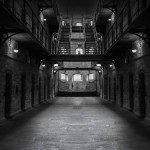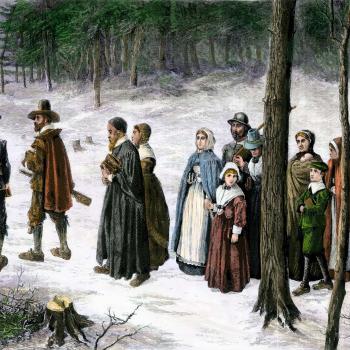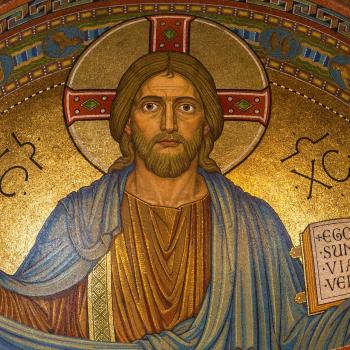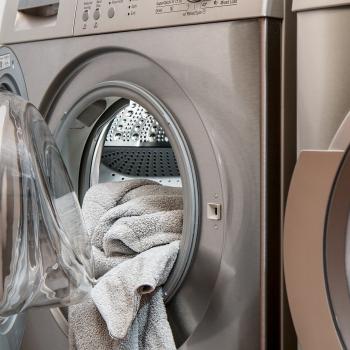In writing my recent post about Rod Dreher’s response to Rachel Held Evans, I came upon something that piqued my interest. From Rod Derher’s Wikipedia page:
Raised a Methodist, he converted to Roman Catholicism in 1993. He wrote widely in the Catholic press, but covering the Roman Catholic Church’s child sex abuse scandal, starting in 2002, led him to question his Catholicism,[1] and on October 12, 2006, he announced his conversion to Eastern Orthodoxy.[12] At the time, Dreher had argued that the scandal was not so much a “pedophile problem”, but that the “sexual abuse of minors is facilitated by a secret, powerful network of gay priests” referred to as the Lavender Mafia.[13]
Curious, I clicked the link given at the reference for Dreher’s “lavender mafia” comments, and found that the page had been taken down. The piece was published in the National Review in 2002, but does not appear anywhere on their website today. Fortunately, the Wayback Machine had a copy of it saved.
The first thing to understand about the Catholic Church’s pedophilia scandal is that it is not technically a pedophilia scandal. Despite the gruesome example of defrocked Boston priest John Geoghan, whose case started the current tidal wave of revelations, the overwhelming majority of priests who have molested minors are not pedophiles — that is, like Geoghan, among the rare adults sexually attracted to pre-pubescent children. They are, rather, “ephebophiles” — adults who are sexually attracted to post-pubescent youths, generally aged 12 to 17. And their victims have been almost exclusively boys.
…
“I think we have to ask the question: Why are 90 percent to 95 percent, and some estimates say as high as 98 percent, of the victims of clergy [abuse] teenage boys? . . . We need to ask that question, and I think there’s a certain reluctance to raise that issue,” said the Rev. Donald B. Cozzens, author of The Changing Face of the Priesthood, on a recent Meet the Press.
The reluctance arises, no doubt, partly out of a fear of antagonizing homosexual anti-defamation groups, who resent the stereotype of male homosexuals as pederasts. It’s much safer to focus inquiry on the question of mandatory celibacy, or the issue of ordaining women. Yet it defies common sense to imagine that an ordinary man, having made a vow not to marry, is therefore going to be sexually attracted to boys. Indeed, suppose the Second Vatican Council in the 1960s had admitted married men to the ranks of the Catholic priesthood: Would a single adolescent boy molested over the past 40 years have escaped his fate? Similarly, if women had been ordained, would that somehow have made sexually predatory gay priests disappear?
No, this is chiefly a scandal about unchaste or criminal homosexuals in the Catholic priesthood, and about far too many in Church leadership disinclined to deal with the problem — or, worse, who may in some cases be actively involved in the misconduct.
…
No one wants to stigmatize homosexuals as abusers, because most of them are not. Still, it’s hard to gainsay the contention that if there were few homosexuals in the priesthood, the number of sex-abuse victims today would be drastically lower.
It’s safe to say that Dreher thinks he knows more about sexuality and sexual identity than he actually does. His piece goes on at length, claiming that seminaries are hotbeds of gay sex and that “the sexual abuse of minors is facilitated by a secret, powerful network of gay priests.” The Catholic hierarchy used this excuse to defray criticism when the extent of the abuse and coverup was first realized, and it’s still being used today. But as excuses go, it’s a horrible excuse.
Abuse is abuse no matter who does it—and regardless of whether victims are prepubescent or post-pubescent. The coverup wasn’t about protecting gay priests, it was about protecting priests who were preying on children. (And yes, children is the right term to use there, because post-pubescent children are still children, and we have something called statutory rape for a reason.) To make matters worse, priests who abuse children do so from a position of authority. Children who grow up in the Catholic Church are typically taught to look up to and respect priests, rendering them especially vulnerable to predation (as young children and as adolescents).
It’s true that significant majority of the victims of sexual abuse in the Catholic Church who have come forward have been boys. However, this number is not anywhere near as high as Dreher claims it is. Dreher quotes a priest’s claim that between 90% and 98% of victims were male, but the John Jay Report found that in 25% of cases where gender was known, accused priests had only female victims. That’s a pretty significant difference.
Consider, too, Dreher’s claim that “the overwhelming majority of priests who have molested minors are not pedophiles.” Dreher claims that pedophilia involves children under age 12, but in fact children ages 13 and under are considered prepubescent. The John Jay Report found that 60% of the cases they examined involved victims who were age 13 or under, making Dreher’s claim incorrect.
In addition, consider access. Because alter servers have typically been boys, and because Catholic churches have not traditionally required programs that involve youth to be supervised by at least two adults at any given time, Catholic priests have generally had more access to boys than to girls.
This is where Dreher’s lack of understanding of sexuality becomes perhaps most significant—homosexuality and heterosexuality are not the binary many people think they are. In addition to bisexuality, it is well known that men who would identify as heterosexual will engage in homosexual behavior in certain environments, particularly all-male environments. We see this in prisons, and we have also seen it in all-male boarding schools. In other words, not everyone who engages in homosexual behavior is necessarily gay.
All of these things—an emphasis on obedience to authority, putting priests in positions of authority over children without good accountability structures, a willingness to cover up abuse to protect the Catholic Church’s name—are things that the Catholic Church needed to fix after the scandal broke in the early 2000s (and years before, really). A focus on making this problem a homosexual problem rather than a problem within the church does nothing to actually fix these things—or protect children.
And frankly, reading Dreher’s piece in its entirety, it’s very clear that he believes gay men are more likely to abuse children than are heterosexual men. This is perhaps not surprising given that part of the justification for his Benedict Option is his concern that Christian colleges and universities will lose their accreditation if they refuse to affirm gay marriage. But in an era when many conservative Christians are shifting their rhetoric to make their opposition to homosexuality more palatable, it’s worth remembering that Dreher had no such qualms fifteen years ago.
As Dreher gains prominence in conservative circles—presenting his ideas as a reasonable alternative to those of “fundagelical” churches—it’s perhaps convenient that this article has largely vanished from the internet.















